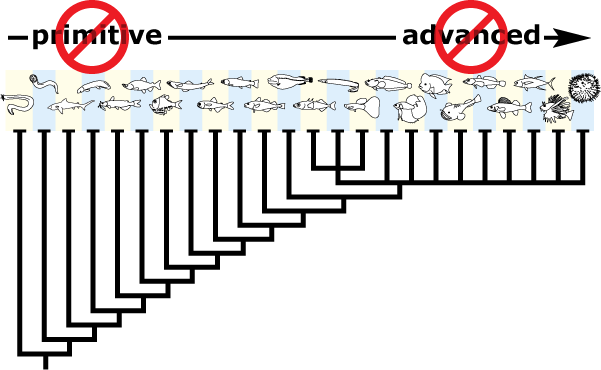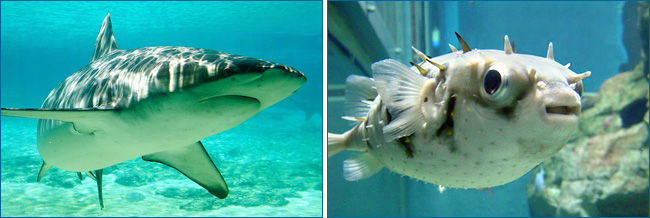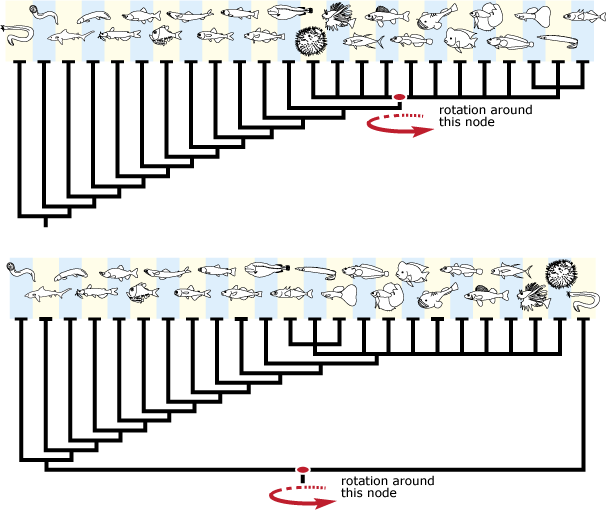The fish tree shown here and most evolutionary trees that you’ll see in textbooks or on websites depict long branches on the left hand side of the phylogeny and short branches on the right hand side, giving the phylogeny a lopsided shape. Many people assume that this means that the branches further to the right (i.e., pufferfish, scorpionfish, and tuna) are more evolutionarily “advanced” than other groups on the tree (e.g., hagfish, lampreys and sharks); however, this is a misconception.

First, there is no universal yardstick against which we can measure species. The whole idea of an “advanced” species is not very scientific and usually gets entangled with a human-centered bias favoring species that seem more similar to us. Second, the position of a taxon relative to others on a phylogeny is not an indication of how adaptive, specialized, or extreme its traits are. Pufferfish happen to appear on the far right side of this phylogeny and hagfish happen to appear on the far left, but this does not mean that pufferfish have specialized traits and hagfish have generalized ones. In fact, hagfish have many specialized traits, such as the ability to excrete a microfiber-filled, slippery slime from their skin that expands when it touches water and seems to help them escape away from predators.
To overcome this common misconception, keep in mind that a single set of evolutionary relationships can be represented by trees with many different arrangements of taxa at the tips of the branches. A phylogeny’s branches can be rotated around their connection points (called nodes) without changing the underlying relationships depicted. This means that our fish phylogeny could easily be depicted in a format with different taxa appearing at the right or left hand side.

